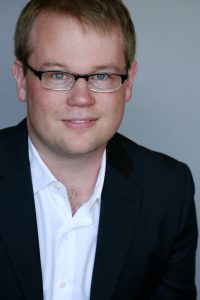
Michael Taylor
UW Electrical Engineering is pleased to welcome Michael Taylor, a leading computer engineering researcher. Taylor, who has accepted a joint appointment in CSE and EE, brings expertise in cutting-edge hardware design, advancing the UW’s reputation as a top university for computer and electrical engineering.
Taylor is currently Associate Professor at the University of California, San Diego and Director of the UCSD Center for Dark Silicon. Taylor brings deep expertise in the design of specialized custom chips — for example, for crypto-currency mining — and the development of novel approaches to hardware design and prototyping. His work has generated much interest within the computer architecture community and has produced a significant amount of press coverage and publications.
Performance and efficiency are consistent themes in Taylor’s research. He is a leading expert on extreme hardware specialization to deal with dark silicon — the portion of a chip that is switched off at any given time due to power constraints. One of his ongoing projects is GreenDroid, an energy-efficient chip for Android phones that is 10 times more efficient than industrial mobile application processors in use today.
Taylor is known for actively pushing new ideas, methods, and open source designs that reduce the effort required to build silicon and hardware prototypes. He created the open-source framework Basejump to support more efficient ASIC prototyping, from base designs, to packaging, to boards. Taylor also produced the first academic paper on bitcoin mining chips, which attracted nationwide attention and established Taylor as an authority on mining hardware innovation.
His team recently published the first paper on ASIC Clouds, which are purpose-built datacenters comprised of large arrays of ASIC accelerators. Their purpose is to optimize the total cost of ownership (TCO) of large, high-volume chronic computations that are emerging in datacenters today. Taylor also has turned his attention to developing architectures and benchmarks for machine learning applications, with a focus on computer vision. He contributed to the creation of the first comprehensive computer vision benchmark suite, SD-VBS, used by over 1,000 institutions and companies. He later developed CortexSuite, an extension of SD-VBS to include machine learning and artificial intelligence — the largest, most comprehensive such benchmark suite to have been created.
Early in his career, Taylor developed a working implementation of one of the first multicore chips: the Raw tiled multicore processor architecture. The project, which was the basis of Taylor’s Ph.D. thesis at MIT, was an experiment in exposing unusually low levels of the hardware — such as pins, wires, and gates — to software, enabling the latter to take advantage of the physical properties of the chip.
As a true applications-to-circuits researcher capable of prototyping both hardware and software, Taylor will bring new dimension to computer and electrical engineering research when he joins the UW this September.
For Taylor, the University of Washington – and Seattle overall – is a place that inspires innovative thought.
“UW and the broader Seattle area (e.g. Microsoft and Amazon) has become the world’s foremost playground for creative computer architects,” said Taylor. “I am excited to be a part of it.”

